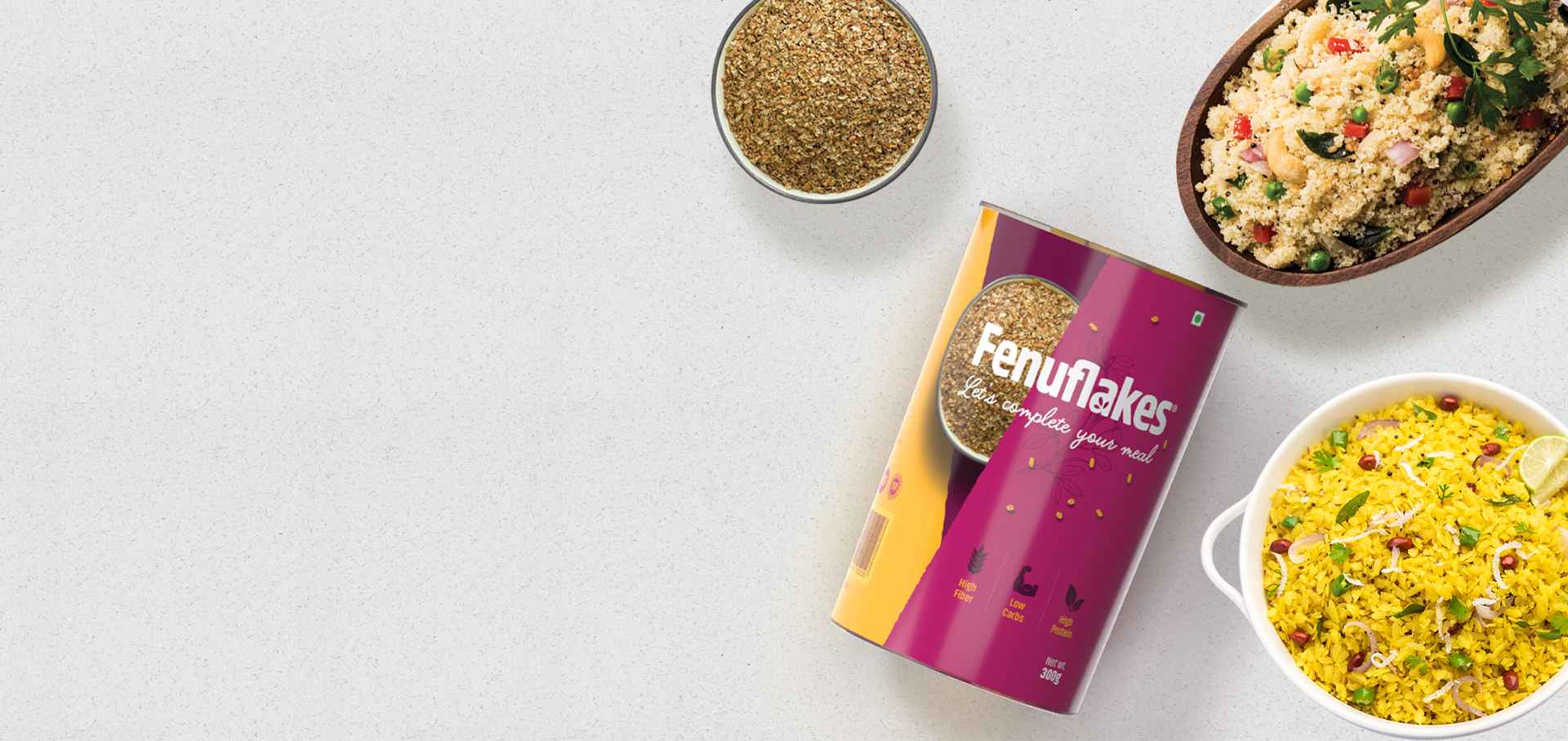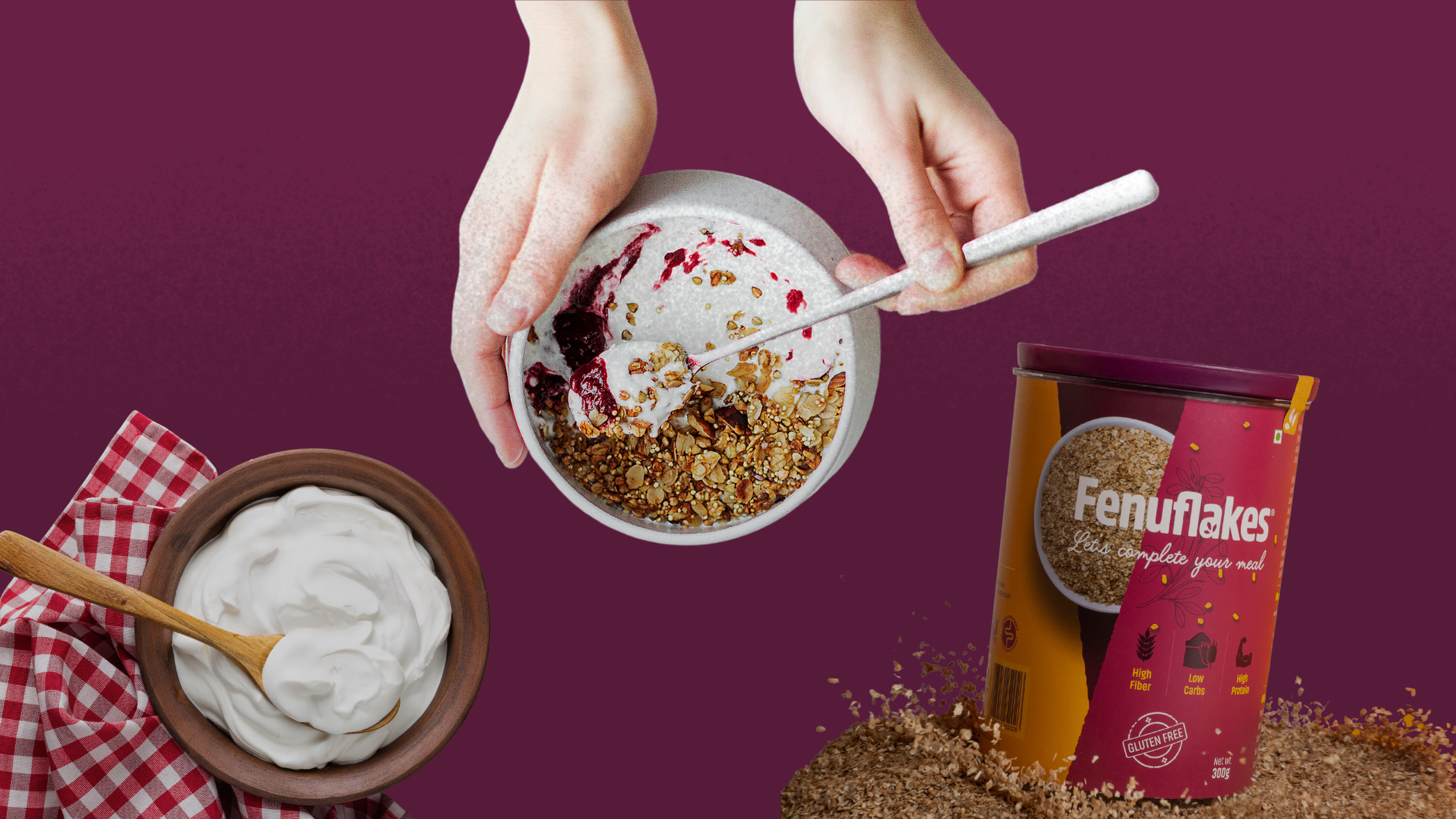- Soluble Fiber:This type of fiber includes plant pectin and gums. It dissolves in water to form a gel-like substance in the digestive tract. Soluble fiber can help lower cholesterol levels, stabilize blood sugar, and provide a feeling of fullness.
- Insoluble Fiber:This type of fiber includes plant cellulose and hemicellulose. It does not dissolve in water and adds bulk to stool, helping to prevent constipation and promote regular bowel movements.
Foods that are rich in fiber often contain a combination of both soluble and insoluble fiber. It’s important to include a variety of these healthy nutrition foods and supplements like Fenuflakes in your diet to get the full spectrum of fiber-related health benefits.
What are the health benefits of dietary fiber?

Dietary fiber offers a wide range of health benefits, making it an essential component of a balanced diet. Here are more details about the various health benefits of dietary fiber:
Improved Digestive Health:
Fiber adds bulk to stool, softening it. It also helps regulate the movement of food through the digestive tract, preventing both constipation and diarrhoea.
Weight Management:
High-fiber foods are often more filling, leading to a greater sense of fullness and reduced overall calorie intake. This can be helpful for weight management and weight loss.
Blood Sugar Control:
Soluble fiber, found in foods like oats and legumes, can slow the absorption of sugar and improve blood sugar control. This is particularly beneficial for individuals with diabetes or those at risk of developing the condition.
Heart Health:
Lower Cholesterol Levels:
Soluble fiber can help reduce “bad” LDL cholesterol levels in the blood, which lowers the risk of heart disease and stroke.
Blood Pressure Regulation:
Recent studies suggest that increased fiber intake may help lower blood pressure, which is another important factor in heart health.
Gut Microbiota Health:
Fibers are one of the important nutrients. A healthy gut microbiome is associated with various aspects of well-being, including immune function and mental health. Fiber serves as a source of nutrition for beneficial gut bacteria, promoting a diverse and healthy gut microbiome.
Detoxification:
Fiber can help remove toxins, bacteria, and potentially harmful substances from the colon, reducing the risk of certain digestive conditions and colon cancer.
Improved Nutrient Absorption:
Some types of dietary fiber can enhance the absorption of minerals like calcium and magnesium in the gut.
It’s important to note that the health benefits of dietary fiber can vary depending on the type and amount of fiber consumed. Additionally, it’s crucial to drink plenty of water when increasing your fiber intake to aid in digestion and prevent digestive discomfort.

The recommended daily intake of fiber varies depending on factors like age, sex, and individual dietary needs. However, here are general guidelines for daily fiber intake as recommended:
For Adults (Ages 18+)
In most countries, the recommended daily allowance is 25-38g of dietary fiber for adults. However, in India, ICMR recommends a minimum of 40g of dietary fiber (2000 Kcal diet) for adults.
For Children and Adolescents (Ages 2-18)
Fiber requirements for children and adolescents vary by age, but a rough guideline is to consume the child’s age plus 5 grams of fiber per day. For example, a 10-year-old child would aim for around 15 grams of fiber per day.
Factors that can influence individual fiber requirements include:
Age:
As mentioned above, fiber needs can vary based on age. Children typically require less fiber than adults, while older adults may have different requirements.
Gender:
Men generally require more fiber than women, primarily due to differences in body size and metabolism.
Caloric Intake:
People who consume more calories may need to consume more fiber to maintain a healthy balance in their diet.
Activity Level:
Active individuals may require more fiber to support their higher energy expenditure and metabolic needs.
Specific Health Conditions:
Certain medical conditions, such as diabetes, irritable bowel syndrome (IBS), or diverticular disease, may require adjustments to fiber intake. For some individuals with digestive conditions, increasing or decreasing fiber intake may be recommended.
Pregnancy and Lactation:
Pregnant and breastfeeding women may need slightly higher fiber intake to support their increased nutrient requirements.
It’s important to note that while these are general guidelines, individual fiber needs can vary widely. It’s good practice to listen to your body’s signals and adjust your fiber intake accordingly. Some people may feel their best with higher fiber consumption, while others may experience digestive discomfort with too much fiber. Gradually increasing your fiber intake and drinking plenty of water can help your digestive system adapt.
What are some good sources of dietary fiber?

- Fruits:Fruits are generally a good source of dietary fiber, especially when you consume them with their skins or peels. Fiber content varies by fruit, but some fiber-rich options include:
- Apples
- Pears
- Berries
- Oranges
- Prunes
- Vegetables:Vegetables are excellent sources of dietary fiber and provide a wide range of nutrients. Fiber content varies by vegetable, but some fiber-rich options include:
- Broccoli
- Brussels Sprouts
- Spinach
- Carrots
- Sweet Potatoes
- Whole Grains:Whole grains are rich in fiber because they contain all parts of the grain, including the bran and germ. Fiber content varies by grain, but some fiber-rich options include:
- Oats
- Quinoa
- Brown Rice
- Whole Wheat Pasta
- Legumes (Beans, Lentils, and Peas):Legumes are one of the best sources of dietary fiber. Fiber content varies by type, but some fiber-rich legume options include:
- Black Beans
- Lentils
- Chickpeas
- Split Peas
- Nuts and Seeds:Nuts and seeds are also good sources of fiber, along with healthy fats and protein. Fiber content varies by type, but some fiber-rich options include:
- Chia Seeds
- Almonds
- Flaxseeds
- Sunflower Seeds
- Fenugreek seeds
- Cereals and Bread:When choosing cereal and bread, opt for whole grain options to get more fiber. Check the nutrition labels for specific fiber content.
- Dietary fiber supplements:There are various Fiber supplements available in India. Fenuflakes is one of them. It is a fenugreek fiber supplement with a near-balanced 1:1 ratio of soluble and insoluble fiber. Having a neutral taste, you can add it to any recipe from sweet to savoury. Using Fenuflakes you can easily cook low-carb Indian food dishes that are high in fiber and fit into your diet seamlessly.
| Nutritional value | ||
| Fenuflakes | Per 30 g | %RDA |
| Energy (Kcal) | 79.71 | 3.99% |
| Protein (g) | 9.95 | 18.42% |
| Net Carbohydrate (g) | 0.05 | |
| – Sugar | 0.00 | 0.00% |
| Total Dietary Fiber | 18.74 | 46.84% |
| – Soluble | 8.91 | |
| – Insoluble | 9.83 | |
| Sodium (mg) | 9.90 | 0.50% |
| Fats (g) | 0.25 | 0.37% |
| – Saturated fats | 0.24 | 1.09% |
| – Trans fat | 0.00 | 0.00% |
| – Cholesterol | 0.00 | |
- Snacks: Some snacks, such as air-popped popcorn, can be a good source of fiber. Popcorn provides about 1-2 grams of fiber per cup (popped).
Frequently asked questions
What is dietary fiber?
Dietary fiber is a complex carbohydrate that is found in plant-based foods that cannot be digested by the human digestive system.
- What foods are high in dietary fiber?
Dietary fiber is present in various foods including vegetables, fruits, nuts and seeds, legumes, and in low-carb Indian food supplements such as Fenuflakes.
- What are the two main types of fiber?
There are two main types of Fiber:
- Soluble fiber: It dissolves in water to form a gel-like substance in the digestive tract.
- Insoluble fiber: It does not dissolve in water and adds bulk to stool.
- Why do we need dietary Fibre?
Fibers are one of the important nutrients of a healthy diet with several significant benefits such as improved digestive health, blood sugar control, lower cholesterol levels, blood pressure regularisation, and so on.
- How much fiber per day?
The recommended daily intake of fiber for adults is 25g to 40g. However, many factors influence the required daily intake of fiber including age, gender, existing health conditions, and so on.
- How to increase fiber?
Gradually increase your fiber intake and increase your consumption of water. It’s important to observe your body’s signals and adjust your daily intake accordingly.
Takeaway
Fibers are one of the important nutrients. Be mindful of portion sizes and cooking methods, as cooking can affect the fiber content of some foods.
Get your fiber from a variety of sources including fruits, vegetables, whole grains, legumes, nuts, and seeds, to ensure you benefit from the different types of fiber and their associated health benefits. High-fiber, low-carb Indian food supplements such as Fenuflakes, a fenugreek fiber is a great way to make sure you achieve your daily fiber intake. Individual fiber needs can vary, so it’s essential to find a level of fiber intake that works best for you and your digestive system.
It is essential to include fiber-rich foods in
your diet to ensure you get the full range of
nutrients and health benefits associated with
dietary fiber.
References
- https://www.ncbi.nlm.nih.gov/pmc/articles/PMC7589116/
- https://www.hsph.harvard.edu/nutritionsource/carbohydrates/fiber/
- https://idaindia.com/wp-content/uploads/2018/12/IDA-position-paper-fibre-24.12.18.pdf
- https://www.ncbi.nlm.nih.gov/pmc/articles/PMC9298262/
- https://aboutkidsgi.org/general-treatments/kids-dietary-fiber/
Related Blogs
How Your Body Breaks Down and Uses Food

Help feed
your hunger.

Submit your recipe on Fenuflakes®
Understanding the Digestive System
How Fiber Supplements Improve Digestion
The Power of Prebiotics and Probiotics for Gut Health
Join Our Club to Get Offers & Updates
Lorem Ipsum is simply dummy text of the printing and typesetting industry. Lorem Ipsum has been the industry’s standard dummy text ever since the 1500s, when an unknown printer took a galley of type and scrambled it to make a type specimen book.
standard dummy text ever since the 1500s, when an unknown printer took a galley of type and scrambled it to make a type specimen book.


